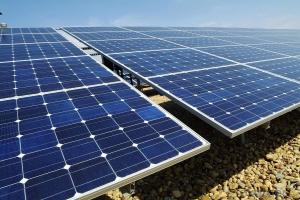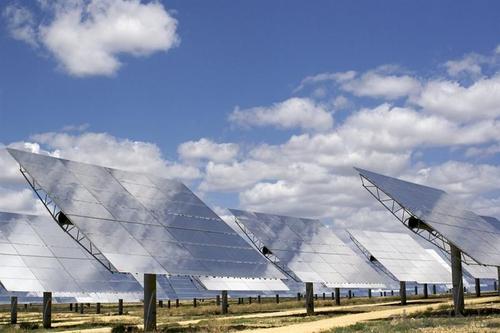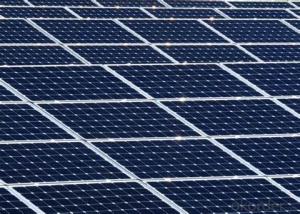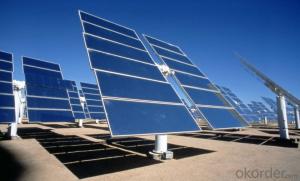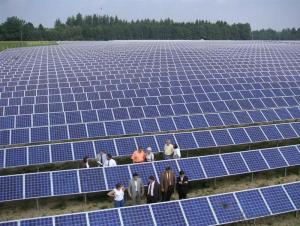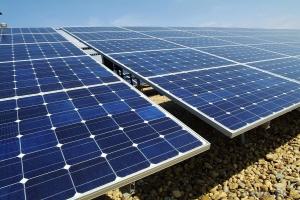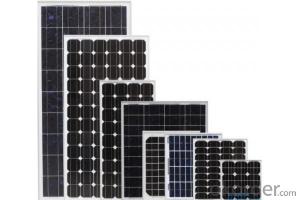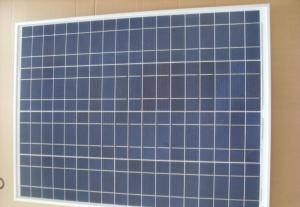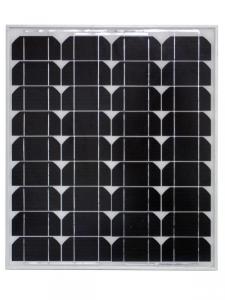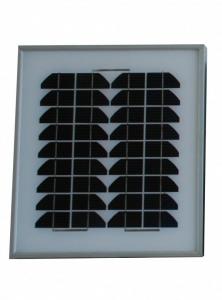Mississippi Solar Panels:Waterproof Solar Panel with Indoor LED Bulb 65W
- Loading Port:
- Shanghai
- Payment Terms:
- TT OR LC
- Min Order Qty:
- 1 watt
- Supply Capability:
- 1000 watt/month
OKorder Service Pledge
OKorder Financial Service
You Might Also Like
Specification
Features:
•Our solar panel is designed according to and complying with all requirements in IEC 61730 and IEC 61215 ed2(Certified by TUV Rheinland )
•We use on our solar panel white tempered glass, EVA, weather-proof substrate film and anodized aluminium frame to provide adequate protection against various environmental conditions
•Visual inspection, performance measurement and dielectric strength tests on every solar module
•Each of our solar panel is backed by a 25 year limited power warranty (≥80%) and 10 year workmanship warranty
•Customization upon request.
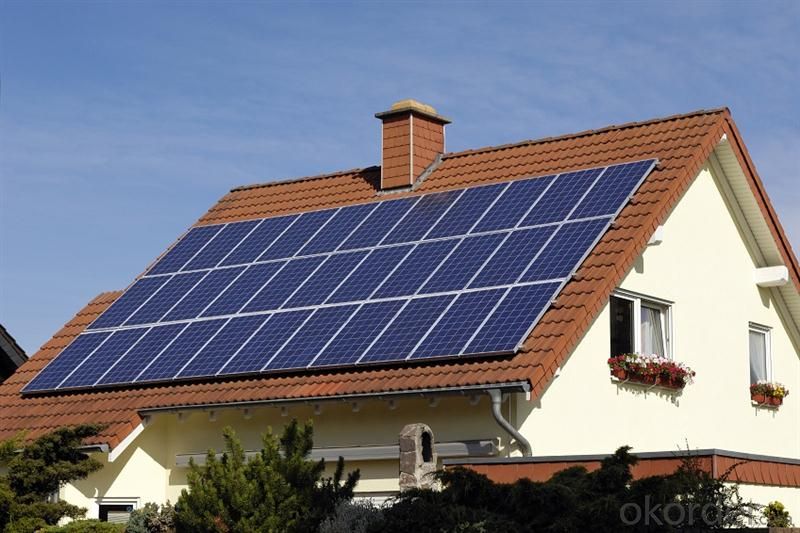
China National Building Material Group Corporation
CNBM International Corporation is a professional solar panel manufacturer in China for CNBM brand . Silicon panel ( silicon module), as our main product, has high quality and good service. Our products are very popular in Europe, Australia, England, Middle East, Mexico, Argentina, Chili, Singapore and Africa.
Furthermore, our products have gained international authorized certificates like TUV, UL and CE.
China National Building Material (Group) Corporation (CNBM), established in 1984, is one of the largest State-owned group corporations of building & mechanical materials which specializes in the design, manufacturing and distribution of building materials in the world.
As the whole world turns “green”, CNBM enters into the Photovoltaic Industry in 2005.After 6 years' fast growth, now our annual capacity is 500MW solar panel and 500MW solar cell.
- Q: I want to buy a solar panel kit but I'm unsure of how it works. Basically I want to run my entainment set, Xbox, cable box, 46 led tv, and some desktop speakers. I went online and found a kit for like 250 or something like that at homedepot and was wondering if that kit is worth the money or go bigger or something.
- Solar panels use light energy (photons) from the sun to generate electricity through the photovoltaic effect. The structural (load carrying) member of a module can either be the top layer or the back layer. The majority of modules use wafer-based crystalline silicon cells or thin-film cells based on cadmium telluride or silicon. The conducting wires that take the current off the panels may contain silver, copper or other non-magnetic conductive transition metals.
- Q: How much would solar panels cost for: A Cell phoneA average houseA car
- They would cost quite a bit but the user would likely be eligible for some energy credits from the power company and their cell phone carrier which would bring down the costs
- Q: Are there any tax credits available for installing solar panels?
- Yes, there are tax credits available for installing solar panels. The federal government offers a Solar Investment Tax Credit (ITC), which allows homeowners and businesses to deduct a percentage of the cost of purchasing and installing solar panels from their federal taxes. Additionally, some states and local jurisdictions also provide their own incentives and tax credits for solar panel installations.
- Q: Photo-Voltaic solar panels are very expensive. Most of a home's energy needs are for heating water, heating and air-conditioning. All of these can be met with thermal solar collectors which are much less expensive. The thermal solar panels would heat water stored in a hot water tank which then can be used as hot water, to heat the home, or as the heat source to a Lithium Bromide Absorption chiller to air-condition a home. With the base line needs met without expensive panels and without inefficient energy conversions, only a small Photo-Voltaic array would be needed for the remaining power needs and since those needs are variable, there would still be power to sell to the grid.
- you completely nailed it!! speaking about large buildings, it would benefit one to do a little more research. my company just installed a 640 collecter system on a million sq foot building. it consists of a absorption chiller (which uses no coolant, just water a silica gel beds, runs of the power of its controller, thats it) 27,000 gallon tank. chiller feeds 2 rotation units and 2 large office spaces for heat and cool. payback expected at less than 5 years. we will expand this system another 200 collectors. residential installs, if tax credits used, achieve 5-7 year payback pending domestic hot water only or dhw and space heating. thermal collectors actually produce more energy than pv panels do, therefore more bang for your buck, also as i hope you all know, pv has around 25% eff, thermal has 95%. also to say the tech part is gone, we use flowmeters that calculate carbon offsets, energy saved, money saved etc...all located in a wireless monitor for the consumer to enjoy.
- Q: Can solar panels be used in areas with high levels of salinity or brackish water?
- Yes, solar panels can be used in areas with high levels of salinity or brackish water. While exposure to saltwater can potentially cause corrosion and reduce the efficiency of solar panels over time, there are various measures that can be taken to mitigate these effects. These include selecting corrosion-resistant materials, applying protective coatings, and regular maintenance. Additionally, advancements in solar panel technology have led to the development of more robust and durable panels that can withstand harsh environments, including areas with high salinity or brackish water.
- Q: I am thinking of buying a 3w solar panel called the nomad 3 from goal zero. I want to charge 35Wh lithum batteries. I have heard that lithium batteries are temperatmental and without a regulated current things could get ugly.I have a couple of chargers that came with the batteries. One is a 2v car charger and another is 0-240v wall charger.Goal zero sell something called a sherpa 50, which contains rechargeable batteries and an inverster and I think they suggest that I charge my batteries indirectly through the Sherpa 50, however, the sherpa 50 is expensive at $200, and seems to have a small capacity, in addition to being extra weight that i don`t want to carry.Electronics geniuses, you are my only hope.
- Lithium batteries do have special charging requirements. I would recommend that you use the 2 volt charger that came with them to keep them happy. Automotive power systems can have voltages as high as 4.5 volts when the engine is running so there's no need to limit the output of the panel to anything less than that. Check with the charger manufacturer to see what it will withstand. Some will work with systems up to 24 volts nominal (up to 29 volts actual) found in larger commercial vehicles such as trucks and busses. If your charger will work with both 2 and 24 volt systems you might not need anything extra to use the unregulated output of the panel. Otherwise I'd recommend a shunt regulator to clamp the output of the panel to no more than 4.5 volts. That way it would dissipate (waste) very little of the panel's power, and even that would only be during those rare times when the panel is producing maximum output. Such a device could be as simple as a high power zener diode, a low power zener coupled with a power transistor, or a precision shunt regulator such as a TL43 coupled with a power transistor. A more complex way would be a to use buck/boost regulator between the panel and your charger. You might gain a slight advantage under low light conditions when the panel isn't putting out much but the overall efficiency could end up worse than the simpler shunt regulator. Under optimum conditions, I would expect it to take a full day for a 3 watt (peak) panel to charge just one of your 35 Wh batteries. Charging an intermediate device such as the Sherpa 50 through its built in charger and then using it to charge your battery through yet another charger would severely cut your overall efficiency. Depending on how long you'll be gone, it might be far more practical, reliable, and economical to just carry (or find a way to be resupplied with) a few additional fully charged 35 Wh batteries. Don
- Q: Can solar panels be installed on warehouses?
- Yes, solar panels can be installed on warehouses. In fact, warehouses are ideal locations for solar panel installations due to their large roof spaces that can accommodate a significant number of panels. The ample sunlight exposure and lack of shading make warehouses a perfect fit for harnessing solar energy. Additionally, solar panels on warehouses can help reduce electricity costs and contribute to a greener, more sustainable energy source.
- Q: Can solar panels be used in agriculture?
- Yes, solar panels can be used in agriculture. They provide a renewable and clean source of energy that can power various agricultural activities such as irrigation systems, lighting, and machinery. Additionally, solar panels can be installed on agricultural buildings or unused land, allowing farmers to generate their own electricity and reduce their carbon footprint.
- Q: im doin a science experiment and i have a battery that is 3.6 volts , does it matter wut voltage the solar panel that im connecting it to is . Does it need to match , be less or does voltage have no effect . If so wut does matter when choosing the type of solar panel to power a bettery?
- Try to disassembled a solar powered calculator inside there will be all the materials u need to your project. U can safe all the trouble to trying to find the correct match. After using try to put it back in if not possible it is just a broken calculator, at least u still have a successful science project.
- Q: okay so my teacher is trying to install a solar panel but we have a problem we don't know where to ground it because it will be a movil house. guys do you have any ideas?
- A Mobile home will have its frame grounded when connected to a standard electrical 'plug-in', if it was built to current Codes. If you plan to use that panel as the entire electrical system you'll need to ground the frame. Vehicle systems, (frame grounded), are 2 Volt for a reason. It would be unwise to use a separately derived 20V. system in that mobile home if that frame's not grounded. (That first step out on to the ground could be a 'lulu'.)
Send your message to us
Mississippi Solar Panels:Waterproof Solar Panel with Indoor LED Bulb 65W
- Loading Port:
- Shanghai
- Payment Terms:
- TT OR LC
- Min Order Qty:
- 1 watt
- Supply Capability:
- 1000 watt/month
OKorder Service Pledge
OKorder Financial Service
Similar products
Hot products
Hot Searches

